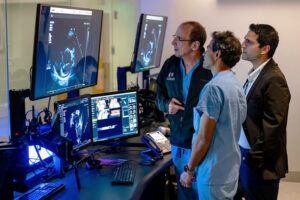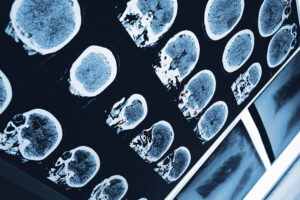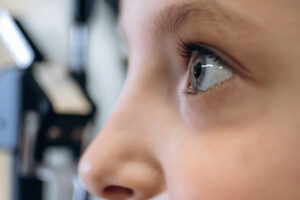AI-designed proteins open doors to new immunotherapies
Artificial intelligence (AI) is increasingly helping drive advances in science and medicine — including cellular signaling. In a recent study, published in Cell, a team of Boston Children’s researchers used groundbreaking AI-based protein design technologies to generate large numbers of immune cells — specifically T cells — in the laboratory and to enhance immune responses ... Read More about AI-designed proteins open doors to new immunotherapies
Advancing global health: Using AI to detect heart disease in children
In many low- and middle-income countries, pediatric cardiologists can’t help children with congenital heart conditions because of a critical hurdle. They don’t have easy access to advanced diagnostic technology. Key takeaways Children in many countries are not receiving proper heart care because they’re not being diagnosed. AI-powered electrocardiogram (AI-ECG) models could give cardiologists in these ... Read More about Advancing global health: Using AI to detect heart disease in children
Study highlights the severity of acute necrotizing encephalopathy in kids with the flu
For most children, influenza (flu) usually means unpleasant symptoms like a fever, sore throat, and achy muscles. But for a small subset of kids, the flu can trigger a rare but serious complication called influenza-associated acute necrotizing encephalopathy (ANE). This form of brain inflammation typically occurs in response to a virus — such as those ... Read More about Study highlights the severity of acute necrotizing encephalopathy in kids with the flu
A world of difference: Why Noah traveled from Florida for multiple sclerosis care
When Noah started having headaches four years ago, his mom, Jonda, initially wondered if it was a classic kid ruse. “I thought maybe he was trying to get out of doing chores,” she remembers. But when the headaches got worse and even his eyes hurt, she brought him to their local emergency room in Florida. ... Read More about A world of difference: Why Noah traveled from Florida for multiple sclerosis care
Hope in sight for autosomal dominant optic atrophy (ADOA)
Autosomal dominant optic atrophy (ADOA), the most common genetic optic neuropathy, is an insidious disease. It often presents slowly during childhood by way of blurry vision, trouble reading or focusing, and sometimes only as a failed vision test. But behind these subtle signs lies progressive, irreversible vision loss in both eyes caused by deterioration of ... Read More about Hope in sight for autosomal dominant optic atrophy (ADOA)
The dopamine reset: Restoring what’s missing in AADC deficiency
In March 2023, a young girl came to Boston Children’s Hospital unable to hold up her head — one striking symptom of aromatic L-amino acid decarboxylase (AADC) deficiency. This rare neurological disorder prevents the brain from producing dopamine and serotonin — essential chemicals for controlling movement, mood, and basic body functions. Without them, children experience ... Read More about The dopamine reset: Restoring what’s missing in AADC deficiency
An unbreakable bond: Brothers turn medical complexities into superpowers
“Look! Is that one JetBlue? I think that one’s Delta!” Running through the grass, climbing on the jungle gym, and watching planes take off and land at nearby Logan Airport: Castle Island in South Boston is Patrick and Teddy’s happy place. The brothers, ages 4 and 3 respectively, are almost as obsessed with airplanes as ... Read More about An unbreakable bond: Brothers turn medical complexities into superpowers
New research sheds light on the genetic roots of amblyopia
For decades, amblyopia has been considered a disorder primarily caused by abnormal visual experiences early in life. But new research from Mary Whitman, MD, PhD, pediatric ophthalmologist in the Department of Ophthalmology at Boston Children’s Hospital, and her colleagues suggests the story is more complicated. “There may be underlying neurodevelopmental differences in children with amblyopia ... Read More about New research sheds light on the genetic roots of amblyopia
Parsing the promise of inosine for neurogenic bladder
Spinal cord damage — whether from traumatic injury or conditions such as spina bifida — can have a profound impact on bladder function. This can result in neurogenic bladder, a problem in which damage to the nerves involved in urination leads to a loss of bladder control. Neurogenic bladder is currently managed with medication, Botox ... Read More about Parsing the promise of inosine for neurogenic bladder
Team spirit: How working with an allergy psychologist got Amber back to cheering
A bubbly high schooler with lots of friends and a passion for competitive cheerleading: On the surface, Amber’s life looks perfect. She even knows what she wants to be when she’s older — a cosmetologist, because she wants to help people feel their best through beauty. Her determination to help others is what drove her ... Read More about Team spirit: How working with an allergy psychologist got Amber back to cheering











